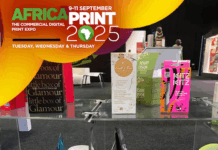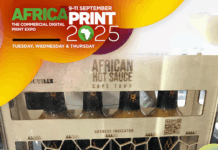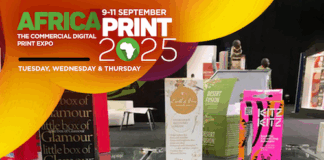Vaughan Patterson, Strategic Business Development Manager, Graphic Communications Group at Ricoh South Africa, says the print industry, whether global or in South Africa, is under serious strain. Rising input costs, supply‑chain delays, shrinking volumes and even public sector uncertainty are putting unprecedented pressure on commercial printers. But within those challenges, there remains room for adaptation and strategic reinvention.
A Global Slowdown With Serious Implications
Globally, the publishing and graphic print sectors are shrinking. In Europe, print volumes dropped by over 21 percent between 2017 and 2022, falling from 10.1 trillion to 8.0 trillion A4 equivalent prints. While volumes are projected to recover slightly to 9.5 trillion by 2027, they are still well below 2017 levels. While overall market value is expected to increase modestly, the result is a market that is delivering less volume at a higher cost per unit, with tighter margins across the board.
Even broader forecasts tell a mixed story. Smithers projects that the value of all printed packaging and print will grow from US $889.4 billion in 2022 to US $1.16 trillion by 2028, but the volume growth is minimal, rising from 44.1 trillion A4 prints to just 44.7 trillion over that period. In other words, the industry is chasing value in spite of falling unit volumes.
Structural Vulnerabilities Compounded By Crisis
Locally, these global trends are exacerbated by persistent structural issues. South Africa has limited local production of paper and packaging board. This means heavy reliance on imports. Local paper supply is shrinking, which pushes greater dependence on overseas shipments.
Shipping costs have surged by over 200 percent since pre‑pandemic levels, and lead times for arrival can stretch to three or more months, sometimes much longer due to port congestion or logistics disruptions. In one example, seasonal order for a major retailer failed because critical stock was held at Durban harbour for six weeks.
Manufacturers and suppliers are feeling the knock‑on effects. South Africa imported nearly R20 billion in printed material in 2019, while exporting just R1.3 billion, making printed products less than 0.2 percent of national trade. Worse yet, printing and publishing value added declined 4 percent annually between 2013 and 2019, and employment dropped from around 90 000 workers in 2016 to just 70 000 by 2019.
Consolidation And Closures
The economic squeeze has accelerated industry consolidation. Several commercial printers have closed or merged in recent years. In the magazine segment notably, major closures, including Liverpool’s Prinovis, leave only one large-scale printer in the UK capable of handling top‑selling titles, as paper costs and diminishing demand tipped the balance. While that’s the UK, it reflects similar market fragilities elsewhere, including South Africa.
Public‑Sector Delays Exacerbate The Problem
Another structural risk comes from public sector printing. Large textbook and examination print orders are a lifeline for many in the local value chain. However, delays in rolling out the revised national school curriculum continue to stall textbook orders. Publishers are hesitant to commission print runs without clarity, creating a bottleneck that ripples across publishers, finishing houses and logistics firms alike.
What This Means For Industry Players
The old model of high‑volume litho print is simply no longer viable in many cases. Print runs are getting shorter; clients expect faster turnaround, less waste and greater customisation. In this environment, digital print, and inkjet in particular, is gaining traction.
Smaller printers are thriving by offering short‑run, on‑demand services made possible by more affordable, flexible digital presses. Smithers forecasts digital print value growing from US $136.7 billion in coming years and taking a greater share of overall print value well into 2035.
For larger or legacy businesses, the way forward lies in diversification, including packaging, retail marketing print, security print, even expansion into broader African markets, as highlighted in South African and international studies.
A Shifting Mindset Is Essential
Those who will survive, and thrive, are those who break from established comfort zones. That may mean reducing reliance on imported stock by rethinking paper procurement and inventory. It may also mean investing in digital presses to handle shorter runs more profitably. Automation, smarter workflows and web‑to‑print platforms are central to staying competitive.
The industry isn’t dead. But it is evolving. Success will come not from scale alone, but from agility, value‑add and clear strategic direction. In a market under pressure, reinvention could be the key to resilience and growth.





















